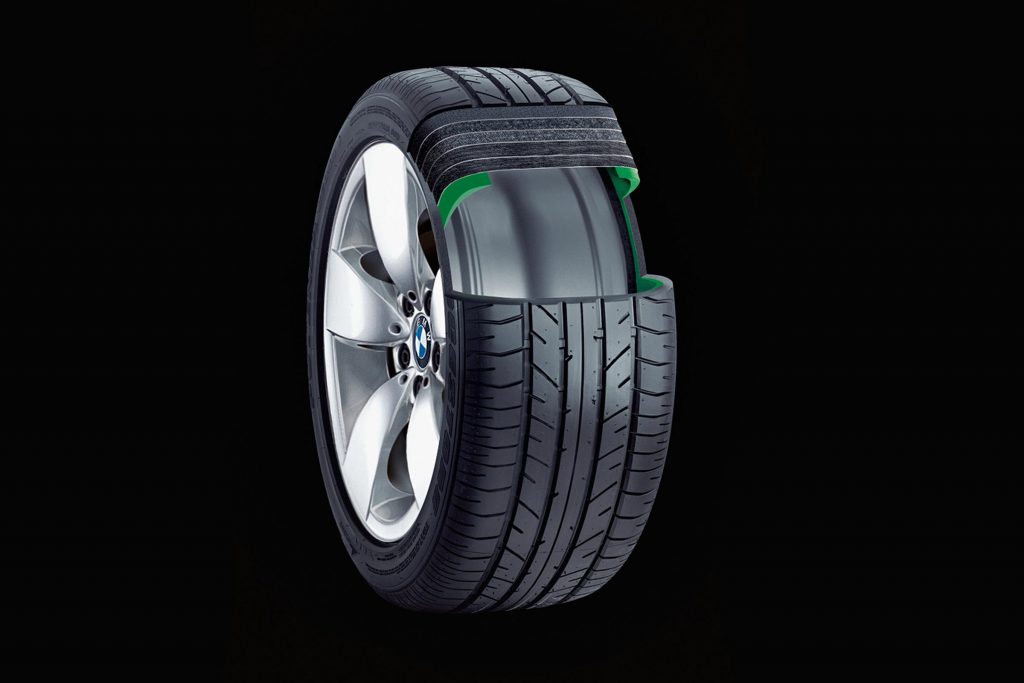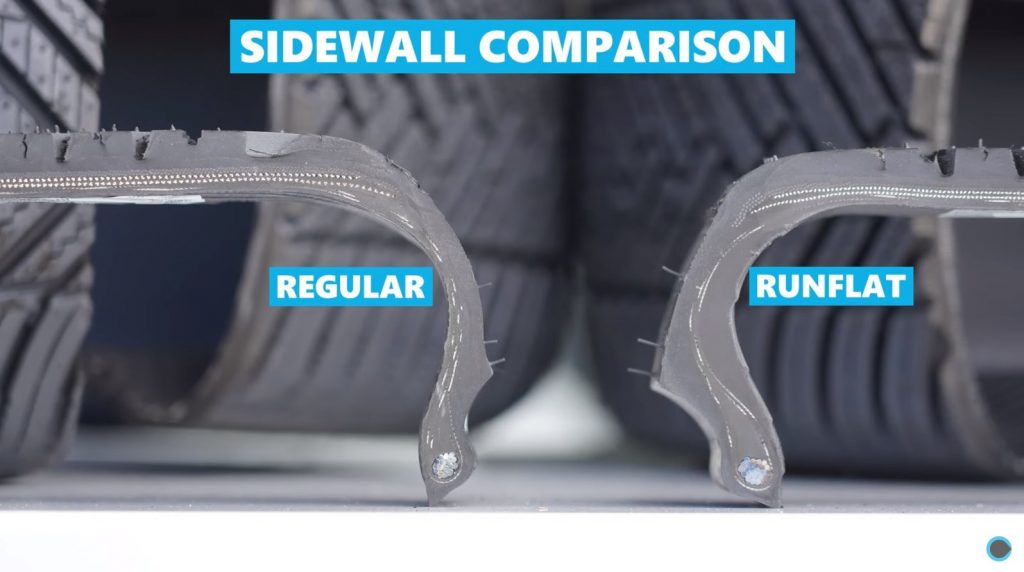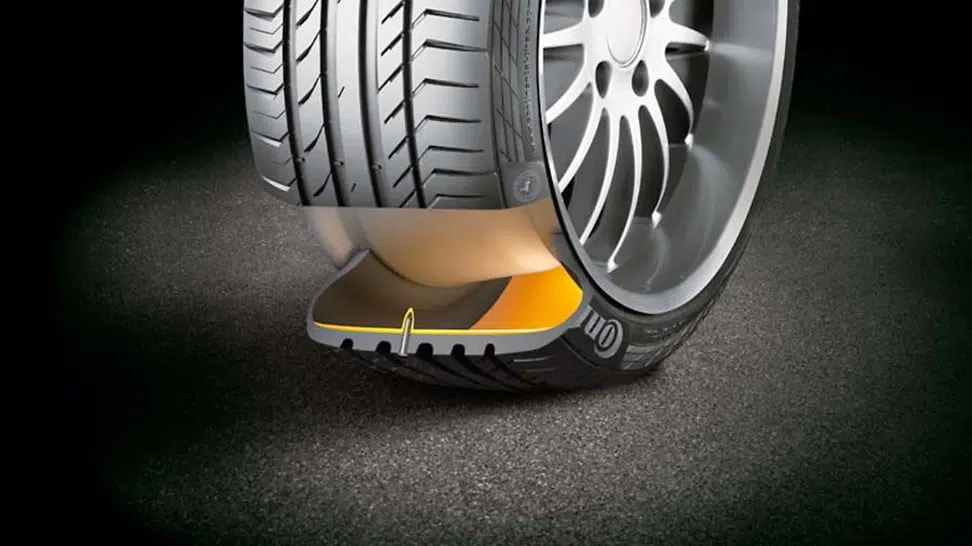Run-flat tires have revolutionized the way we think about road safety and vehicle maintenance. Unlike traditional tires, they allow you to keep driving even after a puncture, eliminating the immediate need for a roadside tire change. This innovative technology offers convenience and peace of mind, especially in situations where stopping may not be safe. However, before deciding if run-flat tires are right for you, it’s important to understand their advantages and potential drawbacks. This guide delves into the key benefits and limitations of run-flat tires to help you make an informed decision.
What Are Run-Flat Tires?

Run-flat tires are designed to maintain their shape and functionality even after losing air pressure. This unique feature allows drivers to continue traveling for a limited distance, typically up to 50 miles, at a reduced speed. Run-flat technology relies on reinforced sidewalls or internal support rings that keep the tire from collapsing under the weight of the vehicle.
These tires are increasingly common in modern vehicles, particularly luxury and high-performance models. They aim to enhance safety and convenience, reducing the risk of accidents caused by sudden blowouts or the need to change a tire on the side of a busy road.
Pros of Run-Flat Tires
1. Enhanced Safety
One of the most significant advantages of run-flat tires is improved safety. A sudden tire blowout can cause loss of control, especially at high speeds. Run-flat technology minimizes this risk by allowing the driver to maintain control and safely reach a service station.
2. No Immediate Tire Changes
With run-flat tires, there’s no need to stop immediately after a puncture. This is particularly beneficial in dangerous or inconvenient locations, such as highways, tunnels, or areas with poor lighting. Drivers can safely continue their journey without the hassle of a roadside tire change.
3. Space-Saving Design
Vehicles equipped with run-flat tires typically don’t require a spare tire. This frees up valuable trunk space and reduces overall vehicle weight. It also eliminates the need to carry a jack and other tools for tire replacement.
4. Time Efficiency
Run-flat tires save time by allowing you to reach a repair shop without interruption. This can be particularly advantageous for drivers on tight schedules or during bad weather conditions, where changing a tire could be challenging or unsafe.
5. Reduced Risk of Secondary Damage
Driving on a completely flat traditional tire can damage the wheel and suspension components. Run-flat tires prevent this by providing enough support to protect the vehicle’s essential parts while driving to a repair shop.
Cons of Run-Flat Tires
1. Higher Initial Cost
Run-flat tires are generally more expensive than standard tires. This higher upfront cost can be a deterrent for budget-conscious drivers. Additionally, the specialized construction and technology involved in run-flat tires contribute to their increased price.
2. Limited Availability
While run-flat tires are becoming more common, they may not be as widely available as traditional options. Drivers in remote areas or those with specific tire size requirements may face challenges in finding replacements quickly.
3. Reduced Ride Comfort
The reinforced sidewalls of run-flat tires can result in a stiffer ride compared to traditional tires. Some drivers may find this reduced comfort undesirable, especially on rough or uneven roads.
4. Shorter Lifespan After Puncture
Although run-flat tires allow you to keep driving after a puncture, their lifespan is limited in this condition. Typically, you’ll need to replace the tire after driving the recommended distance, even if the puncture seems minor.
5. Higher Repair Costs
Repairing or replacing run-flat tires can be more expensive than standard options. The specialized nature of these tires often requires professional service, which can add to the overall cost of ownership.
When to Consider Run-Flat Tires
Run-flat tires are an excellent choice for drivers who prioritize safety and convenience. They’re particularly beneficial for those who frequently travel long distances, drive in remote areas, or face challenging weather conditions. Additionally, vehicles without space for a spare tire may benefit from the space-saving design of run-flat technology.
However, it’s essential to consider your driving habits, budget, and local availability before making the switch. For example, if you value a smoother ride and don’t mind carrying a spare tire, traditional options might be more suitable.
How to Maintain Run-Flat Tires
Proper maintenance is crucial to maximize the lifespan and performance of run-flat tires. Here are some tips to keep them in top condition:
- Regular Inspections: Check for signs of wear, punctures, or damage. Run-flat tires may not show obvious signs of deflation, so periodic inspections are essential.
- Monitor Tire Pressure: Use a tire pressure monitoring system (TPMS) to ensure proper inflation levels. Even though run-flat tires can function without air, maintaining the correct pressure improves performance and longevity.
- Rotate Tires: Regular tire rotation helps distribute wear evenly, prolonging the life of your run-flat tires.
- Avoid Overloading: Excessive weight can strain run-flat tires and compromise their effectiveness. Always adhere to your vehicle’s recommended load capacity.
- Replace Promptly After Puncture: Once a run-flat tire has been driven on after losing air, it’s important to replace it as soon as possible to maintain safety.
Comparing Run-Flat Tires to Traditional Tires
When deciding between run-flat and traditional tires, consider the following factors:

- Cost: Traditional tires are generally more affordable upfront but may require additional expenses for spare tires and tools.
- Convenience: Run-flat tires eliminate the need for immediate roadside repairs, offering greater convenience in emergencies.
- Comfort: Traditional tires often provide a smoother ride, while run-flat options prioritize durability and safety.
- Availability: Standard tires are more readily available, whereas run-flat options may require more effort to locate, especially in certain sizes.
Future of Run-Flat Technology
As automotive technology continues to advance, run-flat tires are expected to become even more efficient and accessible. Manufacturers are working on improving ride comfort and reducing costs, making these tires a viable option for a broader range of drivers. Additionally, advancements in materials and design may lead to longer-lasting run-flat options with enhanced performance.
In the coming years, we may see run-flat technology integrated into more vehicles, including electric and hybrid models, where space and weight considerations are critical. These innovations will likely further solidify the role of run-flat tires in modern automotive safety and convenience.
Conclusion
Run-flat tires offer a unique blend of safety and convenience, making them an appealing choice for many drivers. While they come with certain drawbacks, such as higher costs and reduced ride comfort, their benefits often outweigh the disadvantages, especially for those who prioritize peace of mind on the road. By understanding the pros and cons, maintaining your tires properly, and considering your driving needs, you can make an informed decision that best suits your lifestyle. Whether you choose run-flat or traditional options, investing in quality tires is crucial for a safe and enjoyable driving experience.

Leave a Reply